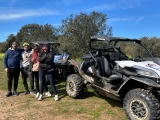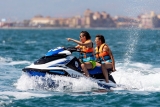Every sport has its variations, and fishing is no exception, offering different styles so every angler can choose what suits them best. Of all the types of fishing out there, today we’ll focus on fly fishing.

Why is it called a "fly"?
The lure mimics an insect that fish might eat, a small crustacean, or even another fish. It’s typically made from thread, feathers, and other synthetic materials.
What is fly fishing?
Fly fishing involves a whip-like motion with the rod. For this, the rod needs to be as lightweight as possible, and flexibility is highly recommended to facilitate movement.
- How is the cast performed? Quite simple: pull the rod backward, pause, then flick it forward again. The longer the pause, the farther the fly will travel.
But beware! Some consider fly fishing an art, as it’s one of the oldest practices, mentioned in texts dating back to the 2nd century BC.

Types of lures
There are different types, and your choice will depend on the location and the fish you’re targeting—some swim closer to the surface, while others dwell in deeper waters. The most well-known are:
- Dry fly. Mimics the behaviour of insects, floating on the water just as they would. The materials used are typically feathers and hair.
- Nymph (or wet fly). Here, the lure imitates a fly larva, so it sinks underwater. Heavier materials are used compared to dry flies, and weights are added to help it sink deeper.
- Streamers. Easy to use, these are among the smallest lures and are often aimed at trout fishing, imitating crustaceans or small fish. Weights are also used here.

The line is another critical feature—some might even say it’s the most fundamental part. It’s a silk or synthetic filament that connects the line to the lure, designed to cast without added weight. There are three main line categories: rocket taper (ideal for long-distance casting), double taper (suited for small rivers), and shooting tapers (which reach farther than the first).
Don’t forget that the rest of your gear is equally important for a successful trip: rods, reels, and waders (essential if you want to stay dry).
Fishing lets you connect with nature and escape the hustle and bustle for a few hours. Companies like Escuela de Pesca Girona or Escuela de Pesca Madrid provide everything you need to get started. It’s ideal for all types of people, situations, and locations. Why not give it a try?











